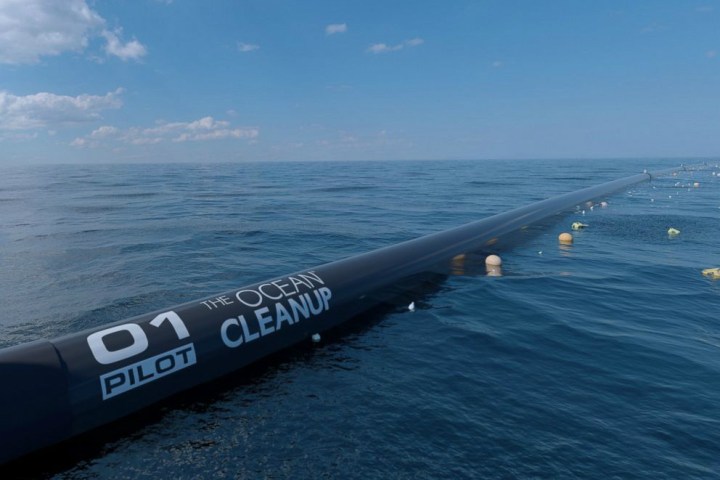
Originally, Ocean Cleanup had proposed anchoring a large “plastic-collecting trap” to the sea floor, nearly three miles beneath the Garbage Patch. However, the plan caused a stir among conservationists. Oceanographer, Dr. Kim Martini expressed concern about “the inevitable growth of marine life on the structure – which will change the hydrodynamics and may add considerable load to the structure.”
The project now utilize a series of drifting surface units to collect debris. The Ocean Cleanup system uses a “floater” made of high-density polyurethane. This apparatus is semi-rigid, meaning it is solid enough to maintain the necessary U-shape, while also being flexible enough to undulate with the ocean surface. When completed, this system will be more than one mile in length.

In the past, researchers have proposed using large nets to capture debris, however, these can be detrimental to local aquatic life. Instead, the Ocean Cleanup project incorporates a solid screen to catch this material. This screen is able to collect debris as small as one centimeter in size, and unlike traditional nets, the screen will allow sea life to safely pass beneath or around it. This permeable sea filter is made of fiber-reinforced thermoplastic polyurethane, which should be durable enough to sift the high seas for decades.
The screen attaches to a trailing sea anchor, preventing the system from drifting at the same speed as the ocean current. This minimal drag allows the floater and screen to collect material as it drifts. Once the screen is packed to the gills with sea garbage, a support vessel collects the captured debris using a system of belts and pumps. The collected waste is then shipped inland, where it can be processed, recycled, and reused.
Computer models estimate this Ocean Cleanup system could reduce the Great Pacific Garbage Patch by nearly 50 percent within five years. After a recent design change, donors contributed an additional $21.7 million to the initiative, bumping the total funding to $31.5 million. Ocean Cleanup plans to deploy a pilot in the North Pacific by late 2017 with the first operational design slated for mid-2018.


